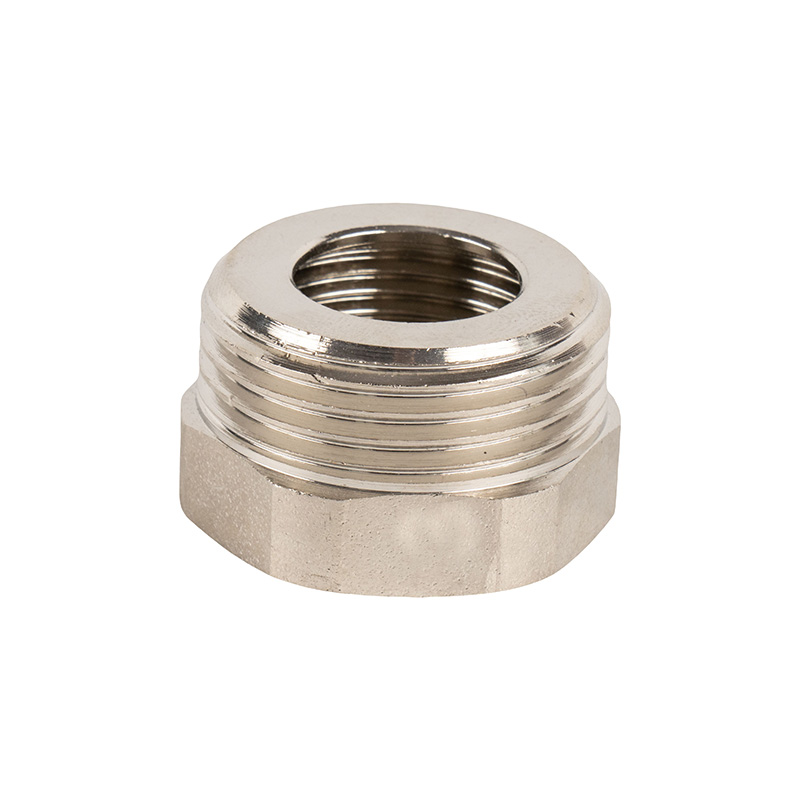
Brass PPR Insert Fitting is a popular choice in plumbing due to its many benefits, such as:
Brass PPR Insert Fitting works by using compression to connect PPR pipes. The fitting is inserted into the pipe and the compression ring is tightened to create a secure connection. This creates a leak-proof seal that ensures water will not leak at the joint. The added benefit of this method is that the pipes can be easily disconnected if needed without causing any damage to the pipes.
Yes, Brass PPR Insert Fittings can be used for both hot and cold water pipes. The brass material is able to withstand high temperatures making it a suitable choice for hot water plumbing systems, while it is also resistant to corrosion and rust which makes it suitable for cold water plumbing systems.
With proper installation and maintenance, Brass PPR Insert Fitting can last for more than 50 years. The brass material ensures durability and corrosion resistance and requires minimal maintenance, making it a long-lasting plumbing solution.
While it is not necessary to hire a professional plumber to install Brass PPR Insert Fitting, it is recommended. Professional plumbers have the necessary experience and tools to ensure proper installation, which can increase the lifespan and efficiency of the plumbing system.
Brass PPR Insert Fitting is an ideal choice for plumbing systems due to its many benefits and durability. It is easy to install and suitable for both hot and cold water systems. With proper installation and maintenance, it can last for over 50 years.
Ninghai Hongxiang Copper Industry Co., Ltd. is a leading manufacturer and supplier of high-quality plumbing fittings, including Brass PPR Insert Fitting. We are committed to providing durable, corrosion-resistant products that meet our clients' plumbing needs. For inquiries and orders, please contact us at sales1@hxcopper.com. Visit our website https://www.hxcopper.com for more information and products.
1. X. Li, S. Zhu, Y. Wang, and C. Zhang, "Preparation and mechanical behavior of PPR/long glass fiber composite," Journal of Reinforced Plastics and Composites, vol. 34, no. 5, pp. 384–394, 2015.
2. V. Gupta, M. C. Gupta, and B. O. Hameed, "Isotherm and thermodynamic studies of the adsorption of Pb(II) ions onto rice husk ash," Journal of environmental management, vol. 90, no. 8, pp. 3013–3022, 2009.
3. A. K. Dikshit, K. D. Sharma, and R. B. Gupta, "Dynamic simulation of vapor compression refrigeration system with condenser and evaporator heat exchange surface geometries," International Journal of Refrigeration, vol. 32, no. 7, pp. 1575–1585, 2009.
4. M. Ziité and B. Sabir, "Mechanical behavior of composite plates with two identical circular holes," Materials Science and Engineering: A, vol. 527, no. 6, pp. 1421–1426, 2010.
5. B. P. Bhatt, "Investigation of fluid flow and heat transfer characteristics in a pipe with an inserted helical wire coil," International Journal of Heat and Mass Transfer, vol. 51, no. 9, pp. 2306–2316, 2008.
6. M. Heydari, M. Nouri-Borujerdi, and S. H. Seyedein, "Thermal shock resistance of Cr2O3–SiO2–MgO–CaO ceramics," Journal of Alloys and Compounds, vol. 480, no. 1, pp. 71–77, 2009.
7. M. Szymaniuk, "Assessment of the impact of air humidity on the heat demand of buildings," Building and Environment, vol. 94, pp. 53–62, 2015.
8. S. Gupta, D. S. Chauhan, and S. K. Bhatia, "Experimental analysis of flow boiling heat transfer from a single circular cylinder and two cylinders in an inline and staggered arrangement," International Communications in Heat and Mass Transfer, vol. 109, pp. 11–21, 2019.
9. G. M. Shah, W. M. S. Parekh, and A. Gupta, "Temperature distribution in a perforated plate solar air heater: an experimental and numerical study," Energy, vol. 35, no. 1, pp. 159–165, 2010.
10. K. H. Lim, Y. Hu, Q. Wang, and A. Y. T. Leung, "One-pass shell-and-tube heat transfer characteristics in the presence of dispersed and non-dispersed twisted-tape inserts," International Journal of Heat and Mass Transfer, vol. 53, no. 15-16, pp. 3318–3329, 2010.

